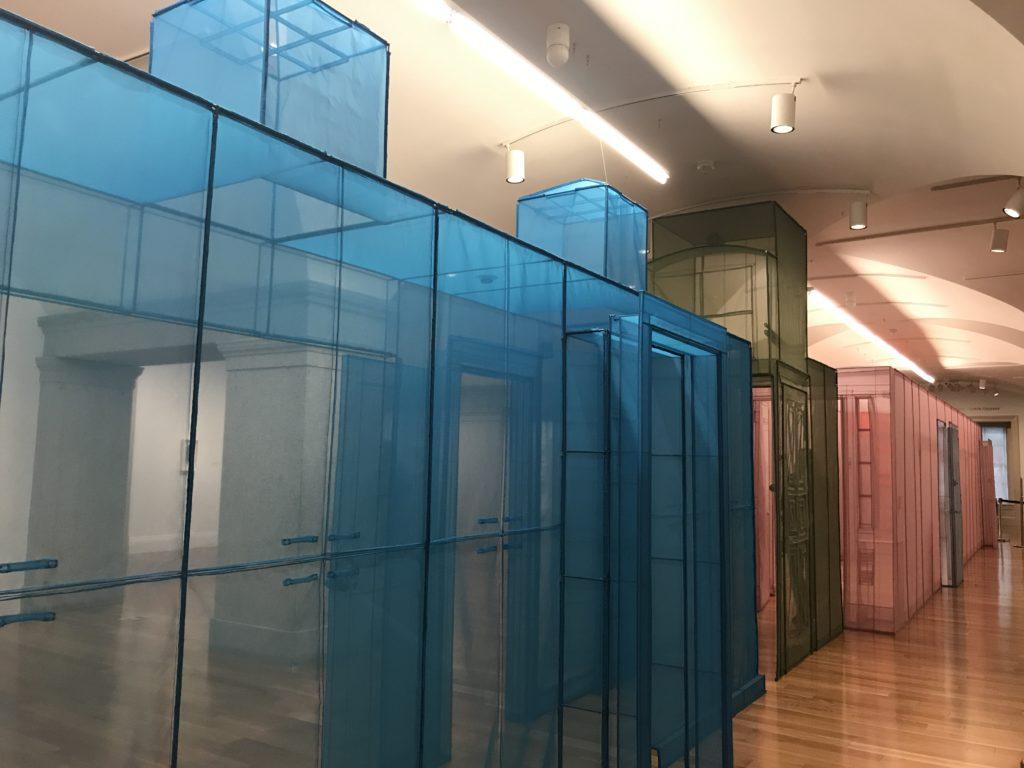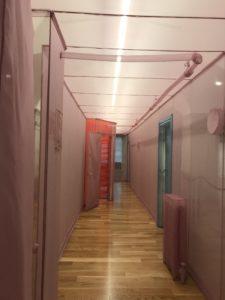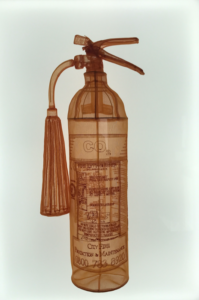
Experiences are not always shared — but the concept of home is universal. At “Do Ho Suh: Almost Home” at the Smithsonian American Art Museum, Korean artist Do Ho Suh recreates his memory of his homes in Korea and the United States through colorful and diaphanous fabric installations.
The exhibit, on display from March 16 to Aug. 5, presents drawings, small-scale fabric sculptures and large-scale installations that represent Suh’s concept of home and belonging.
At a gallery talk with James Dicke Curator of Contemporary Art Sarah Newman, she discussed Suh’s background and inspiration for major works of the exhibition. “It is fascinating that where Do Ho Suh grew up was like this replica of a memory of something ancient. I think this idea of replicating homes and bringing the past with you in some way is embedded into his childhood,” Newman said.
Suh was born into an artistic family in 1962 in Seoul, South Korea. His father was a painter, and his mother had extensive knowledge of Korean culture and heritage. When Suh turned 29 years old, he moved to the United States to continue his studies at the Rhode Island School of Design and Yale University, where he found his passion for sculpture. Since then, he has travelled to different cities around the globe and now works in New York City, London and Seoul.
The cultural displacement Suh experienced when he moved to the United States changed his perspective on art. Rather than focusing on destinations, he became more interested in transitional spaces. Through his transportable fabric sculptures, Suh desires to carry his memory of intimate spaces to depict his ever-changing sense of identity.
The nuances of American and Korean culture inspire Suh and deepen the complexity of his work, Newman explained.
“Do Ho Suh has this constant struggle of thinking about the West and Korea, tradition and innovation,” Newman said. “I don’t think he is coming down to one side or the other; rather, he is trying to weave between them and have them all in his mind at the same time.”

This idea of weaving through different cultures is clear in the main installation of the exhibition, which Suh refers to as “Hubs.” Viewers can walk through a fabric hallway that connects Seoul to Berlin to New York — three cities in which Suh lived. The blue corridor represents Suh’s childhood home in Seoul, before merging into a green segment based on his home in Berlin and finally connects to a pink hallway resembling his apartment in New York City. His attention to minute details, from the height of the ceilings to the size of the door knobs, creates an uncanny experience for viewers — walking into a familiar yet unfamiliar space.
“His art is like a suitcase home,” Newman said. “He can pack it up; he can bring it with him wherever he wanted to go and can erect it anywhere. He can always have his homes with him wherever he was. I think that there is this sense of longing and sense of loss inherent in that.”
Suh’s work is site-specific because it is not made for the individual or the place that the piece represents, but rather explores the idea that the artwork takes on a different meaning every time it is exhibited in another space.
“Suh considers himself existentially homeless. He is always thinking about how to kind of pair his homes with each other,” Newman said.

Surrounding the main installation are a group of specimens from his apartment in Berlin and New York. Pointing to the right side, Newman contrasted the rugged elements chosen from the New York apartment with the charming objects from Berlin. “I love seeing the New York specimens over there which is all plumbing and electricity, while on the left, the Berlin specimens consist of cordially-designed door handles and hinges,” Newman said.
Newman also remarked how Suh’s work reaches beyond the narrative of the artist’s life.
“So as much as this is a personal story, it is also an investigation of semiotics of architecture. It is about how different cities relate to people and how people relate to them,” Newman said.
Suh’s work is not merely about recreating the physical space, but rather transferring the memory of the space into a tangible form. His own history of migration from South Korea to the United States is expressed through intensely visual and deeply personal representations of his meaning of a home. By engaging the audience, Suh’s work can evoke longing and desire for a home.
“Almost Home” speaks to the core of the American immigrant experience. The exhibition symbolizes questions with which we struggle every day, examining the role of tradition in the concept of “home” as well as the intersection of national identity and personal identity.
“Almost Home” is on display at the Smithsonian American Art Museum from March 16 to Aug. 5. Admission is free.














